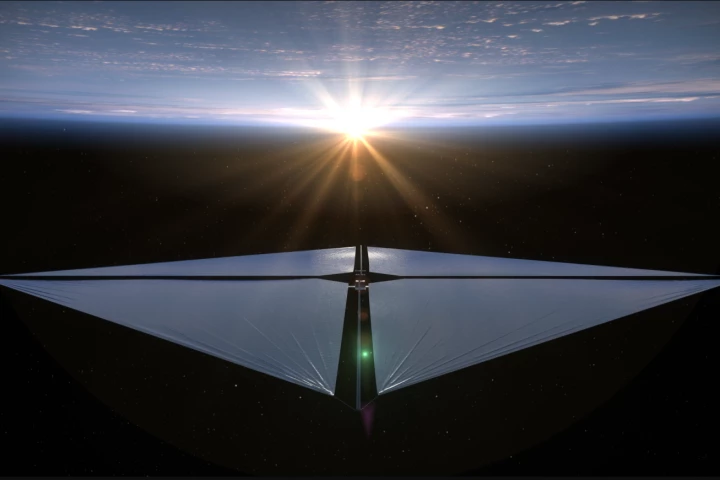Solar Sail
-
The world's most advanced solar sail spacecraft began its epic odyssey as it lifted off atop a Rocket Lab Electron launcher from Launch Complex 1 in Mahia, New Zealand. It was one of two payloads on the Beginning Of The Swarm mission.
-
NASA is gearing up to launch an advanced solar sail spacecraft later this month. Using a new boom made of lightweight polymer composites, the Advanced Composite Solar Sail System is scheduled to lift off on April 24.
-
After three years circling the Earth, the Planetary Society’s LightSail 2 mission has come to an end following a fiery reentry. The satellite was an important tech demo for solar sailing, which could eventually propel spacecraft to other stars.
-
NASA has selected a fascinating new project for further development, known as the Diffractive Solar Sail. By bending light before it hits the sail, this device could propel spacecraft more efficiently than conventional propulsion technologies.
-
ESA is looking at using the world's thinnest known material to build lighter, more efficient solar sails. By making sails out of one-atom-thick graphene sheets, the space agency aims to make sails capable of propelling unmanned interstellar missions.
-
The Planetary Society announced today that after unfurling its solar sail last week, the tiny spacecraft has successfully leveraged photons from the Sun to shift its trajectory in Earth orbit, a landmark moment in the history of space exploration.
-
After launching into orbit aboard SpaceX’s Falcon Heavy rocket last month, The Planetary Society’s LightSail 2 satellite has now entered the most critical phase of its mission, successfully unfurling its solar sail and starting to surf through space on the power of the Sun.
-
Future spacecraft could be getting around under the power of sails. But of course, with no wind in space, these sails are catching another method of propulsion – photons from starlight. The tech is soon due to be demonstrated in action onboard LightSail 2, a small satellite due to launch next week.
-
Eco Marine Power is preparing to put its rigid solar energy sails through their paces next year. The EnergySail from EMP can harness the power of the wind and sun at the same time, for high-efficiency transport on the high seas.
-
It took Voyager 1 over 30 years to reach interstellar space, but NASA is testing a new sail technology that could cut that time by two thirds.
-
The Planetary Society's brief, yet successful LightSail mission came to a fiery end on Sunday. After 25 days in orbit, the CubeSat designed to test a solar sail propulsion system burned up after reentering the Earth’s atmosphere somewhere over the South Atlantic.
-
The Planetary Society today confirmed that its LightSail satellite has successfully deployed its Mylar solar sail, achieving the main objective of the mission after 19 days in low-Earth orbit. The CubeSat completed transmission of its first image showing the sail open and partly spread out.
Load More











